
- Subject:
- Applied Science
- Biology
- Life Science
- Material Type:
- Module
- Author:
- OpenStax College
- Date Added:
- 07/18/2021

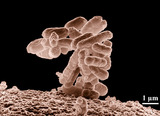
By the end of this section, you will be able to:Identify the shared characteristics of the natural sciencesSummarize the steps of the scientific methodCompare inductive reasoning with deductive reasoningDescribe the goals of basic science and applied science

By the end of this section, you will be able to:Identify and describe the properties of lifeDescribe the levels of organization among living thingsRecognize and interpret a phylogenetic treeList examples of different sub disciplines in biology
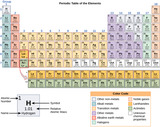
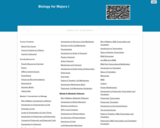
This gateway biology course provides a strong foundation in the principles of biology for students majoring in Natural Science, medical and healthcare fields. It is the second of a two-course sequence. Primary topics such as the history of life, body systems, and ecology are covered in this course.
This course was developed by Lumen Learning, with contributing work from Shelli Carter. The course is based on the OpenStax textbook Biology, supplemented with relevant materials from Khan Academy and videos from multiple sources. Original practice activities were authored by Shelli Carter and Lumen Learning in the development of this course.
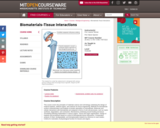
This course covers the principles of materials science and cell biology underlying the design of medical implants, artificial organs, and matrices for tissue engineering. Methods for biomaterials surface characterization and analysis of protein adsorption on biomaterials. Molecular and cellular interactions with biomaterials are analyzed in terms of unit cell processes, such as matrix synthesis, degradation, and contraction. Mechanisms underlying wound healing and tissue remodeling following implantation in various organs. Tissue and organ regeneration. Design of implants and prostheses based on control of biomaterials-tissue interactions. Comparative analysis of intact, biodegradable, and bioreplaceable implants by reference to case studies. Criteria for restoration of physiological function for tissues and organs.
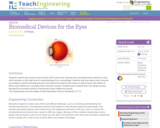
Students examine the structure and function of the human eye, learning some amazing features about our eyes, which provide us with sight and an understanding of our surroundings. Students also learn about some common eye problems and the biomedical devices and medical procedures that resolve or help to lessen the effects of these vision deficiencies, including vision correction surgery.
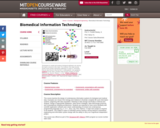
This course teaches the design of contemporary information systems for biological and medical data. Examples are chosen from biology and medicine to illustrate complete life cycle information systems, beginning with data acquisition, following to data storage and finally to retrieval and analysis. Design of appropriate databases, client-server strategies, data interchange protocols, and computational modeling architectures. Students are expected to have some familiarity with scientific application software and a basic understanding of at least one contemporary programming language (e.g. C, C++, Java, Lisp, Perl, Python). A major term project is required of all students. This subject is open to motivated seniors having a strong interest in biomedical engineering and information system design with the ability to carry out a significant independent project. This course was offered as part of the Singapore-MIT Alliance (SMA) program as course number SMA 5304.
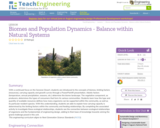
With a continued focus on the Sonoran Desert, students are introduced to the concepts of biomes, limiting factors (resources), carrying capacity and growth curves through a PowerPoint® presentation. Abiotic factors (temperature, annual precipitation, seasons, etc.) determine the biome landscape. The vegetative component, as producers, determines the types of consumers that form its various communities. Students learn how the type and quantity of available resources defines how many organisms can be supported within the community, as well as its particular resident species. Students use mathematical models of natural relationships (in this case, sigmoid and exponential growth curves) to analyze population information and build upon it. With this understanding, students are able to explain how carrying capacity is determined by the limiting factors within the community and feeding relationships. By studying these ecological relationships, students see the connection between ecological relationships of organisms and the fundamentals of engineering design, adding to their base of knowledge towards solving the grand challenge posed in this unit.
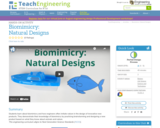
Students learn about biomimicry and how engineers often imitate nature in the design of innovative new products. They demonstrate their knowledge of biomimicry by practicing brainstorming and designing a new product based on what they know about animals and nature.
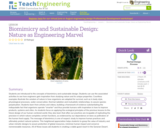
Students are introduced to the concepts of biomimicry and sustainable design. Countless examples illustrate the wisdom of nature in how organisms are adapted for survival, such as in body style, physiological processes, water conservation, thermal radiation and mutualistic relationships, to assure species perpetuation. Students learn from articles and videos, building a framework of evidence substantiating the indisputable fact that organisms operate "smarter" and thus provide humans with inspiration in how to improve products, systems and cities. As students focus on applying the ecological principles of the previous lessons to the future design of our human-centered world, they also learn that often our practices are incapable of replicating the precision in which nature completes certain functions, as evidenced by our dependence on bees as pollinators of the human food supply. The message of biomimicry is one of respect: study to improve human practices and ultimately protect natural systems. This heightened appreciation helps students to grasp the value of industry and urban mimetic designs to assure protection of global resources, minimize human impact and conserve nonrenewable resources. All of these issues aid students in creating a viable guest resort in the Sonoran Desert.
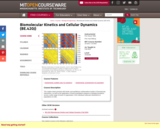
This subject deals primarily with kinetic and equilibrium mathematical models of biomolecular interactions, as well as the application of these quantitative analyses to biological problems across a wide range of levels of organization, from individual molecular interactions to populations of cells.
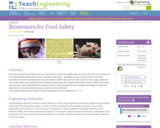
How can you tell if harmful bacteria are in your food or water that might make you sick? What you eat or drink can be contaminated with bacteria, viruses, parasites and toxins—pathogens that can be harmful or even fatal. Students learn which contaminants have the greatest health risks and how they enter the food supply. While food supply contaminants can be identified from cultures grown in labs, bioengineers are creating technologies to make the detection of contaminated food quicker, easier and more effective.

This learning video introduces high school students to a topic they would not ordinarily study in school, biotechnology, and to different applications of biotechnology that relate to the main theme of the module - making the desert greener. After reviewing traditional methods used for manipulating plants to produce desired traits, students will learn about the methods of making transgenic plants. Dr. Ziad discusses a real world problem that is critical in his country, Jordan, where much of the land is desert. A prerequisite to this video lesson is some background in biology.
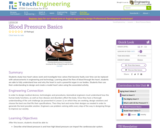
Students study how heart valves work and investigate how valves that become faulty over time can be replaced with advancements in engineering and technology. Learning about the flow of blood through the heart, students are able to fully understand how and why the heart is such a powerful organ in our bodies.
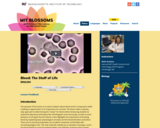
The purpose of this lesson is to teach students about blood and its components while instilling an appreciation of its importance for survival. The lesson takes a step-by-step approach to determining the recipe for blood while introducing students to important laboratory techniques like centrifugation and microscopy, as well as some diseases of cell types found in blood. It also highlights the importance of donating blood by explaining basic physiological concepts and the blood donation procedure.
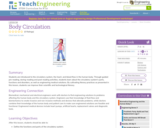
Students are introduced to the circulatory system, the heart, and blood flow in the human body. Through guided pre-reading, during-reading and post-reading activities, students learn about the circulatory system's parts, functions and disorders, as well as engineering medical solutions. By cultivating literacy practices as presented in this lesson, students can improve their scientific and technological literacy.
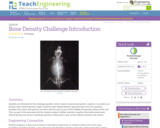
Students are introduced to the challenge question, which revolves around proving that a cabinet x-ray system can produce bone mineral density images. Students work independently to generate ideas from the questions provided, then share with partners and then with the class as part of the Multiple Perspectives phase of this unit. Then, as part of the associated activity, students explore multiple websites to gather information about bone mineral density and answer worksheet questions, followed by a quiz on the material covered in the articles.
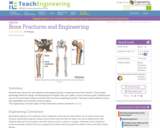
Students learn about the role engineers and engineering play in repairing severe bone fractures. They acquire knowledge about the design and development of implant rods, pins, plates, screws and bone grafts. They learn about materials science, biocompatibility and minimally-invasive surgery.